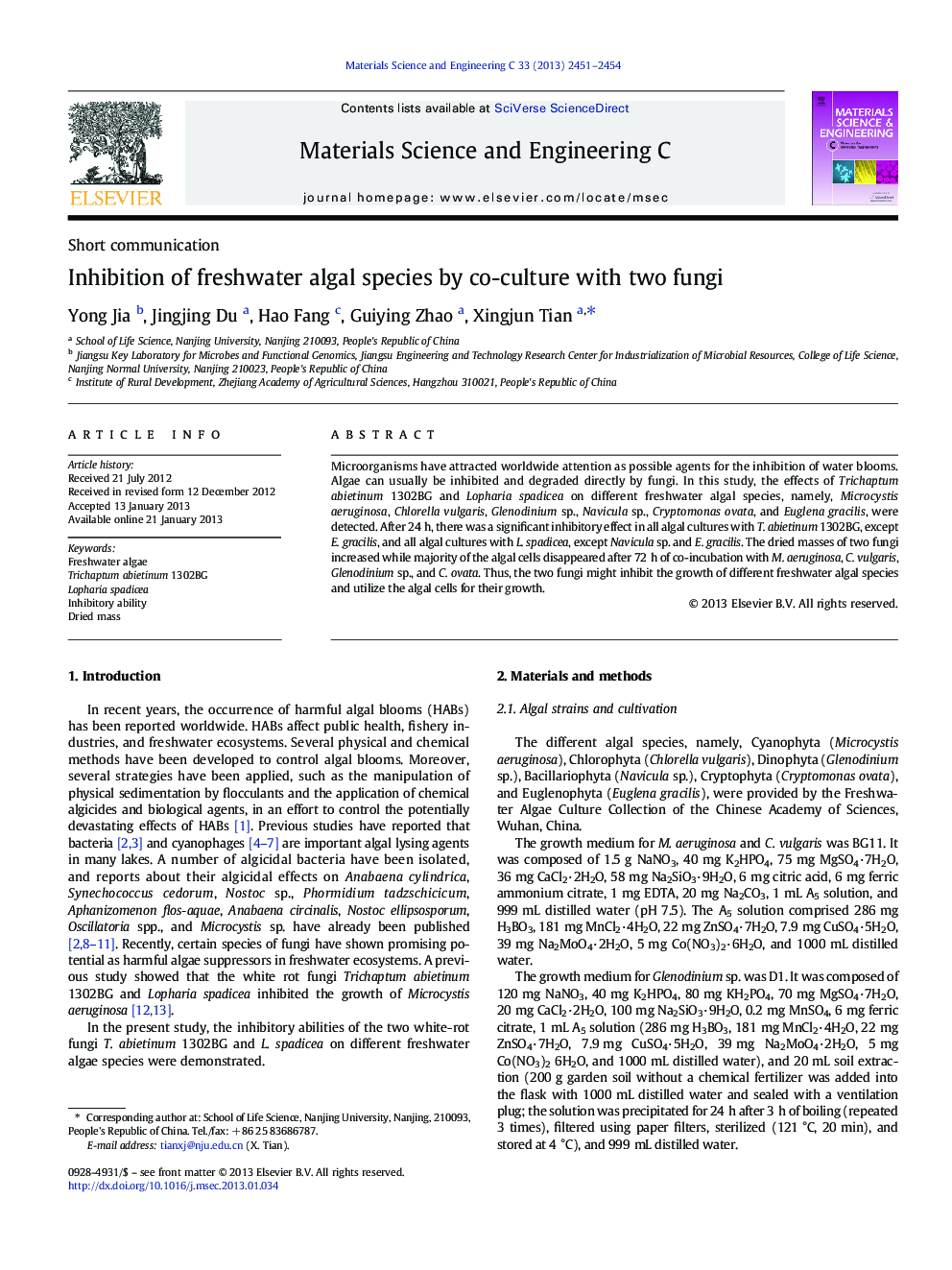| Article ID | Journal | Published Year | Pages | File Type |
|---|---|---|---|---|
| 1429460 | Materials Science and Engineering: C | 2013 | 4 Pages |
Microorganisms have attracted worldwide attention as possible agents for the inhibition of water blooms. Algae can usually be inhibited and degraded directly by fungi. In this study, the effects of Trichaptum abietinum 1302BG and Lopharia spadicea on different freshwater algal species, namely, Microcystis aeruginosa, Chlorella vulgaris, Glenodinium sp., Navicula sp., Cryptomonas ovata, and Euglena gracilis, were detected. After 24 h, there was a significant inhibitory effect in all algal cultures with T. abietinum 1302BG, except E. gracilis, and all algal cultures with L. spadicea, except Navicula sp. and E. gracilis. The dried masses of two fungi increased while majority of the algal cells disappeared after 72 h of co-incubation with M. aeruginosa, C. vulgaris, Glenodinium sp., and C. ovata. Thus, the two fungi might inhibit the growth of different freshwater algal species and utilize the algal cells for their growth.
► T. abietinum 1302BG and L. spadicea inhibited most of freshwater algal growth. ► TA-1302 and LS-1302 accelerated the growth of Euglena gracilis in co-culture. ► T. abietinum 1302BG and L. spadicea might utilize the algae for their growth.
